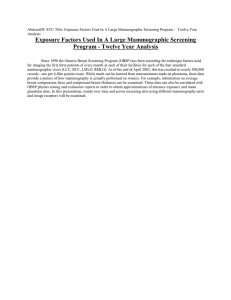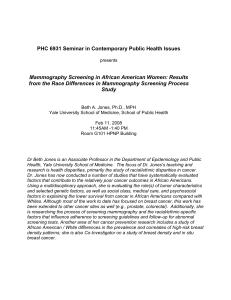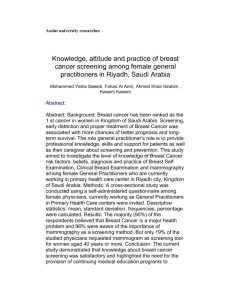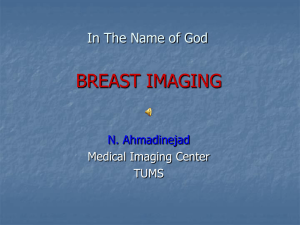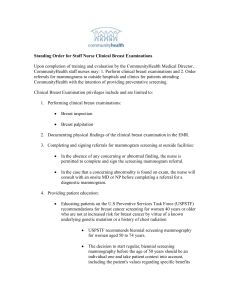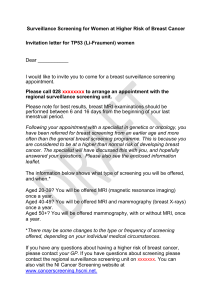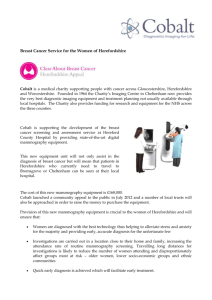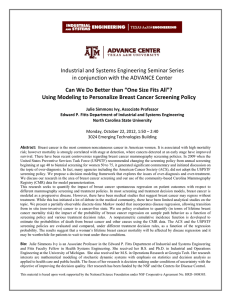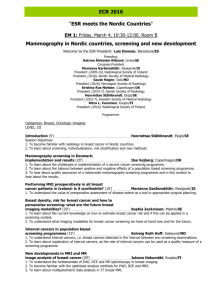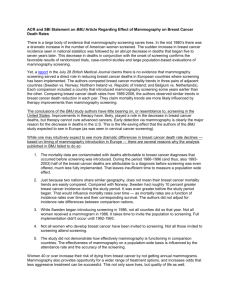An Educational Intervention to Increase Breast Cancer Screening in
advertisement
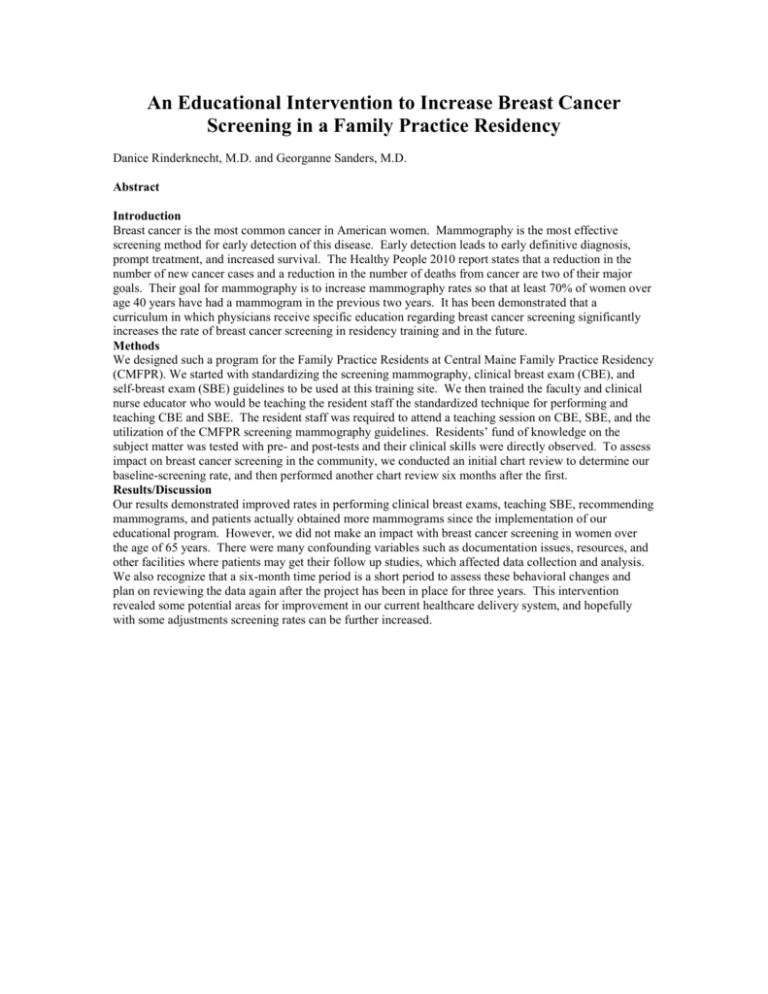
An Educational Intervention to Increase Breast Cancer Screening in a Family Practice Residency Danice Rinderknecht, M.D. and Georganne Sanders, M.D. Abstract Introduction Breast cancer is the most common cancer in American women. Mammography is the most effective screening method for early detection of this disease. Early detection leads to early definitive diagnosis, prompt treatment, and increased survival. The Healthy People 2010 report states that a reduction in the number of new cancer cases and a reduction in the number of deaths from cancer are two of their major goals. Their goal for mammography is to increase mammography rates so that at least 70% of women over age 40 years have had a mammogram in the previous two years. It has been demonstrated that a curriculum in which physicians receive specific education regarding breast cancer screening significantly increases the rate of breast cancer screening in residency training and in the future. Methods We designed such a program for the Family Practice Residents at Central Maine Family Practice Residency (CMFPR). We started with standardizing the screening mammography, clinical breast exam (CBE), and self-breast exam (SBE) guidelines to be used at this training site. We then trained the faculty and clinical nurse educator who would be teaching the resident staff the standardized technique for performing and teaching CBE and SBE. The resident staff was required to attend a teaching session on CBE, SBE, and the utilization of the CMFPR screening mammography guidelines. Residents’ fund of knowledge on the subject matter was tested with pre- and post-tests and their clinical skills were directly observed. To assess impact on breast cancer screening in the community, we conducted an initial chart review to determine our baseline-screening rate, and then performed another chart review six months after the first. Results/Discussion Our results demonstrated improved rates in performing clinical breast exams, teaching SBE, recommending mammograms, and patients actually obtained more mammograms since the implementation of our educational program. However, we did not make an impact with breast cancer screening in women over the age of 65 years. There were many confounding variables such as documentation issues, resources, and other facilities where patients may get their follow up studies, which affected data collection and analysis. We also recognize that a six-month time period is a short period to assess these behavioral changes and plan on reviewing the data again after the project has been in place for three years. This intervention revealed some potential areas for improvement in our current healthcare delivery system, and hopefully with some adjustments screening rates can be further increased.
